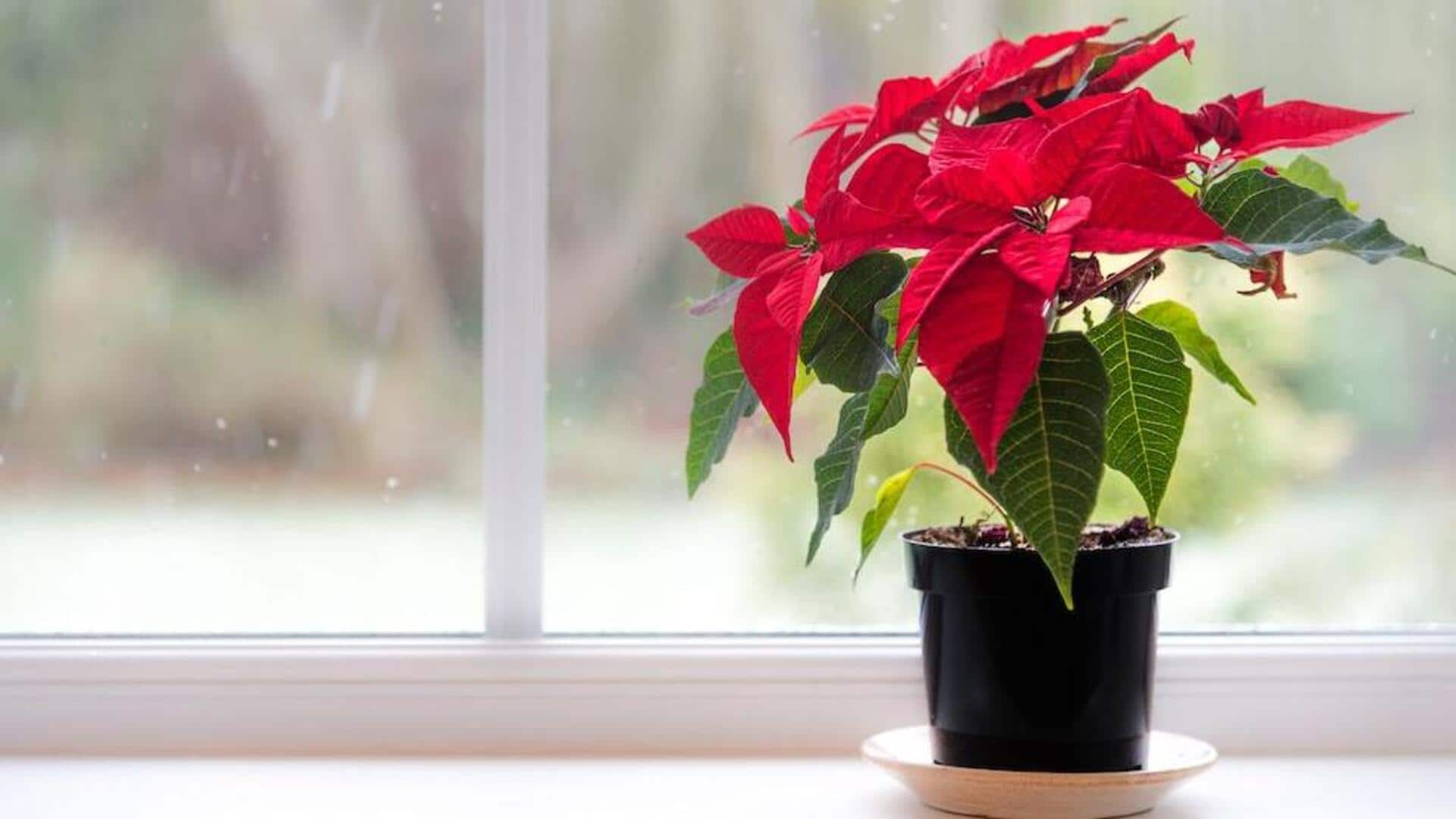
Fostering festive poinsettias: 5 holiday care rituals
What's the story
Poinsettias, the iconic emblem of holiday cheer, require specific care to maintain their vibrant colors and healthy foliage. This guide outlines five essential steps for nurturing poinsettias during the festive season. By following these tips, you can keep your poinsettias looking beautiful and ensure they remain a key element of your holiday decorations, bringing joy and warmth to your celebrations.
Location
Selecting the right spot
Poinsettias love light, but you should avoid placing them in direct sunlight, which can scorch their leaves. Choose a location that gets at least six hours of indirect sunlight a day. Don't put your poinsettia near cold drafts or next to appliances that generate a lot of heat, as both of these conditions can cause leaf drop.
Watering
Ensuring proper hydration
Proper watering is key to poinsettia care. Keep the soil moist, but not waterlogged. Check the soil every couple of days and only water when the top layer feels dry to the touch. Over-watering will lead to root rot, while under-watering will cause the leaves to wilt. Use lukewarm water to prevent shock to the plant's roots.
Humidity
Maintaining optimal humidity
Poinsettias thrive in high humidity, ideally 50-60%. If your climate is dry or you're running heaters (which dry out the air), boost humidity by placing a humidifier nearby or put the plant on a tray filled with pebbles and water. Just make sure the pot isn't sitting in water, as this can damage the plant.
Fertilization
Feeding your poinsettia
While poinsettias are blooming, they require no fertilizer. Once the colorful bracts fade, however, a little nourishment helps coax out new leaves. A balanced, all-purpose fertilizer applied every two weeks keeps them robust. Important: Dilute the fertilizer to half strength. Overfeeding risks plant damage, potentially burning roots or discoloring leaves.
Temperature
Monitoring temperature conditions
Poinsettias are sensitive to temperature changes and prefer daytime temperatures between 65 degrees Fahrenheit (18 degrees Celsius) and 70 degrees Fahrenheit (21 degrees Celsius). Nighttime temperatures should not fall below 60 degrees Fahrenheit (16 degrees Celsius). Exposure to hot or cold drafts can cause premature leaf drop or prevent the colored bracts from developing properly.